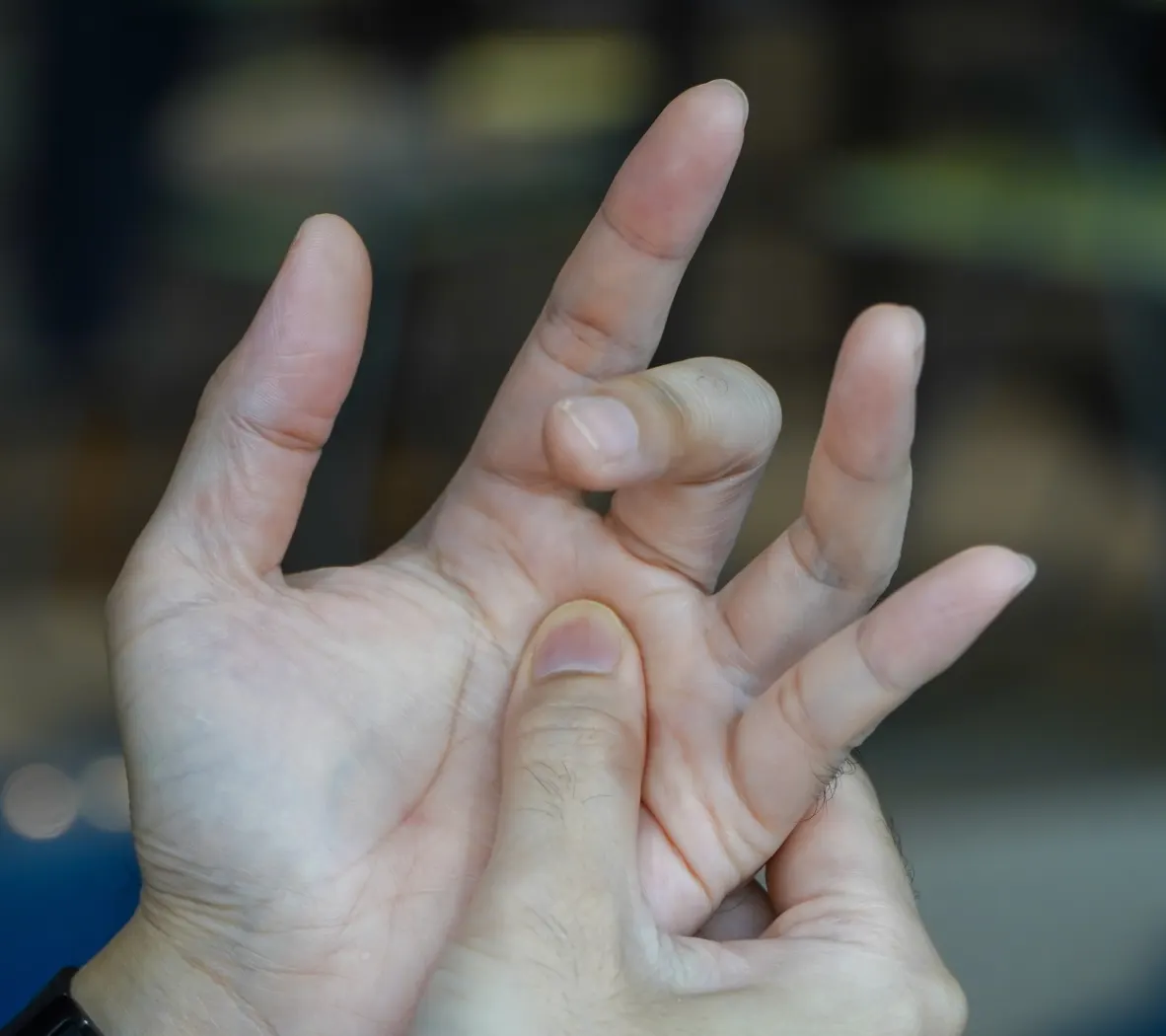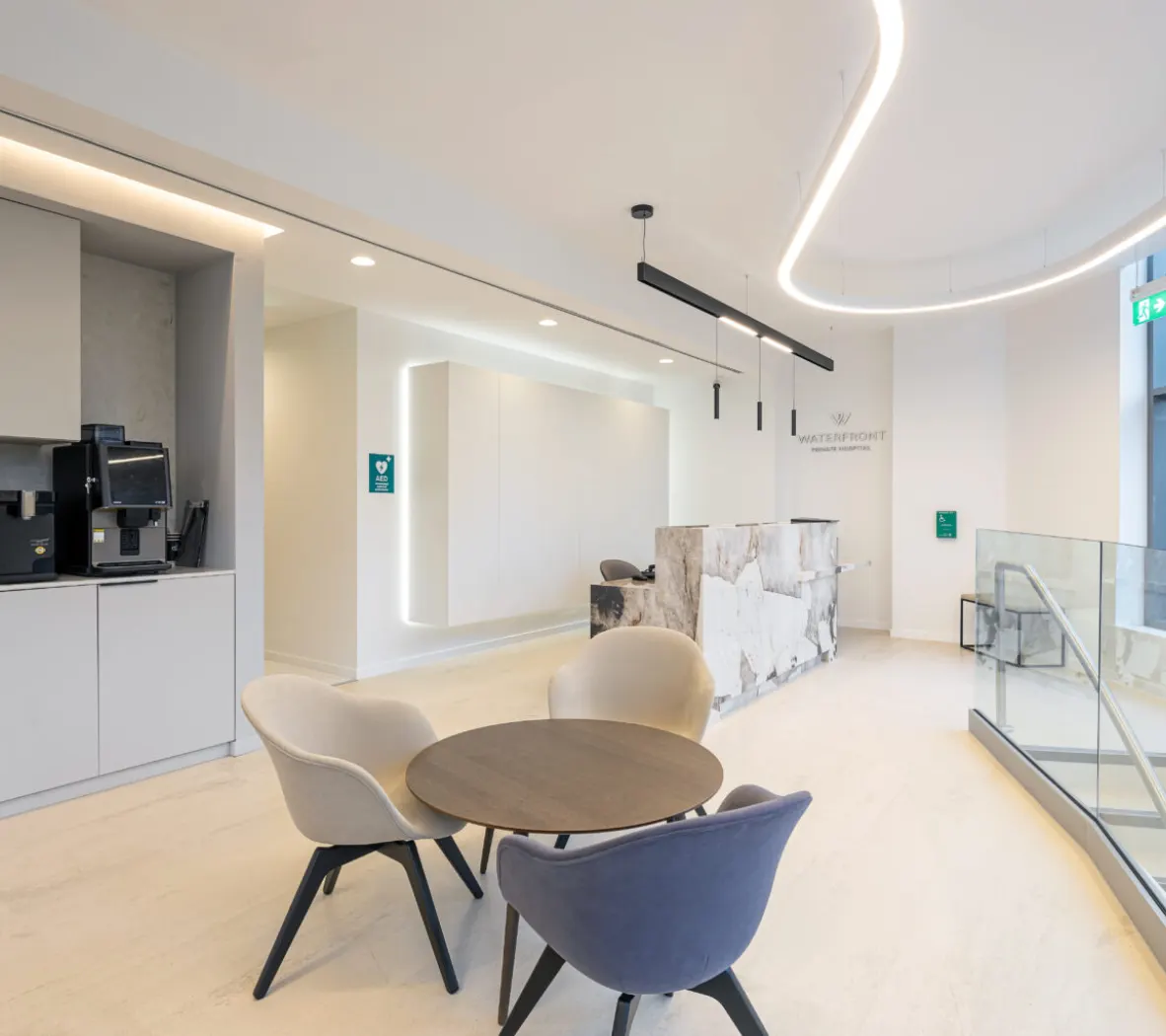Trigger finger
Trigger Finger, medically known as stenosing tenosynovitis, is a condition that affects the tendons in your fingers or thumb. It occurs when inflammation narrows the space within the sheath surrounding the tendon in the affected finger. This condition is characterised by:
- Stiffness, particularly in the morning.
- Popping or Clicking Sensation when you move your finger.
- Tenderness or a Bump in the palm at the base of the affected finger.
- Finger Locked in a Bent Position, which suddenly straightens.
At Waterfront Private Hospital, we offer comprehensive diagnostic and treatment services for Trigger Finger. Our approach combines state-of-the-art diagnostic methods with various treatment options tailored to each patient’s needs, ensuring effective relief and recovery.

Overview
- TYPE OF ANAESTHETIC
Local - LENGTH OF SURGERY
20 minutes - HOSPITAL STAY
Walk in walkout - RECOVERY
no time to 2 weeks off work (depending on the nature of your work)

Beautiful, Immaculate & Friendly
The Waterfront is a beautiful and immaculate hospital. To me, it felt as if I were in a luxury spa. The staff are both utterly friendly and professional. The entire process was personal and seamless. Thank you.
Sandra Burns
April 2024
Understanding trigger finger
Trigger Finger can affect any finger, including the thumb. It’s more common in fingers that frequently perform gripping actions and can occur in one or more fingers. The condition is more prevalent in women and those with certain medical conditions like diabetes and rheumatoid arthritis.
The exact cause of Trigger Finger is not always clear. However, it’s often linked to repetitive motion or forceful use of the finger or thumb. Occupations and hobbies that involve prolonged gripping or repetitive hand use can increase the risk.

Private treatment options for trigger finger
At Waterfront Private Hospital, we provide effective and personalised treatment options for Trigger Finger to reduce pain and restore normal finger movement. Our treatment approach includes:
- Conservative Treatments: Often, Trigger Finger can be treated without surgery. Options include:
- Rest and Activity Modification: Avoid activities that cause pain and use a splint to keep the affected finger in an extended position.
- Exercises: Gentle stretching and strengthening exercises to improve mobility and reduce stiffness.
- Medications: Over-the-counter pain relievers like ibuprofen or naproxen to reduce pain and inflammation.
- Steroid Injections: Corticosteroid injections into the tendon sheath can reduce inflammation and allow smoother finger movement. Steroid injections can be done at the clinic consultation, settling the patient’s symptoms in 70% of cases.
- Physical Therapy: Customised therapy programs to improve the affected finger’s flexibility, strength, and function.
- Surgical Options: In cases where conservative treatments are ineffective, surgical intervention may be considered. Our surgical treatments include:
- Trigger Finger Release Surgery: A minimally invasive surgery to widen the opening of the tendon sheath so the tendon can glide more freely.
Our experienced team of specialists ensures that each patient receives a comprehensive evaluation and a treatment plan that best suits their individual condition and lifestyle. We are committed to utilising the latest techniques and technologies to provide optimal care and facilitate a swift and effective recovery.
At Waterfront Private Hospital, we understand the impact Trigger Finger can have on your daily life, and our goal is to help you regain pain-free, smooth movement as quickly and safely as possible.
Further reading:
FAQ Section: Trigger Finger
What is trigger finger? Trigger finger, medically known as stenosing tenosynovitis, is a condition where one of your fingers gets stuck in a bent position. It may straighten with a snap, like a trigger being pulled and released. This condition occurs when inflammation narrows the space within the sheath surrounding the affected finger’s tendon.
What are the symptoms of trigger finger? Symptoms of trigger finger include stiffness, especially in the morning; a popping or clicking sensation as you move your finger; tenderness or a bump (nodule) in the palm at the base of the affected finger; and the finger catching or locking in a bent position, which suddenly pops straight.
Who is at risk for developing trigger finger? Individuals most at risk include women, people over 40 years of age, those with occupations or hobbies that involve repetitive hand use and prolonged gripping, and people with certain health conditions like diabetes and rheumatoid arthritis.
How is trigger finger diagnosed at your waterfront hospital? Diagnosis typically involves a physical examination. Your doctor may ask you to open and close your hand, checking for areas of pain, smoothness of movement, and evidence of locking. Imaging tests are only necessary if there’s concern about an underlying condition.
What treatment options does your waterfront hospital offer for trigger finger? Treatment options range from rest, splinting, and nonsteroidal anti-inflammatory drugs to steroid injections and surgery, depending on the severity of the condition. Our specialists tailor treatment plans to individual needs, focusing on relieving symptoms and restoring finger movement.
Can trigger finger be treated without surgery? Yes, many cases of trigger finger can be treated without surgery. Initial treatments may include rest, splinting the affected finger, and steroid injections to reduce inflammation. Physical therapy may also be recommended to improve flexibility and strength.
What does trigger finger surgery involve? Trigger finger surgery, performed under local anaesthesia, involves making a small incision in the palm of your hand to access and widen the tendon sheath, allowing the tendon to move freely again. This procedure is typically outpatient, with patients returning home the same day.
What is the recovery process like after trigger finger surgery? Recovery varies by individual but generally includes rest, gentle exercises to improve motion, and possibly physical therapy. Most patients experience immediate relief from locking symptoms, though full recovery of grip strength and range of motion may take a few weeks to months.
Are there any complications associated with trigger finger surgery? As with any surgery, there are potential risks, though complications are rare. These may include infection, nerve damage, or stiffness in the finger. Our team takes comprehensive measures to minimise these risks and support a smooth recovery.
How can I prevent trigger finger? While not all cases can be prevented, reducing risk factors can help. This includes taking regular breaks from repetitive activities, using ergonomic tools, and doing exercises to strengthen your hands and fingers. If you have conditions like diabetes or rheumatoid arthritis, managing them effectively can also reduce your risk.
How can I schedule an appointment to discuss my trigger finger symptoms? You can schedule an appointment by contacting our hospital through our website or phone. Our dedicated team is ready to assist you in evaluating your symptoms and discussing the best treatment options tailored to your situation.
Authors
Ms. Philippa Rust, GMC 4321455, is a fully accredited Hand Surgeon on the GMC Specialist Register for Orthopaedic Surgery. Since 2010, she has been a Consultant at the Plastic Surgery Unit of St John’s Hospital in Edinburgh, specialising exclusively in hand and wrist surgery. Ms Rust is among the first in the UK to hold the Diploma of Hand Surgery and is skilled in advanced techniques, including wrist arthroscopy.
Dr Kazem Nassar
Dr. Kazem Nassar, MBChB, FRCS (Plast), GMC 7131999, is a Plastic and Reconstructive Surgeon Consultant with over 10 years of experience. He practices at St John’s Hospital and the Western General Hospital in Edinburgh, specializing in melanoma, skin cancer treatments, breast surgery, and post-cancer reconstructive surgery.
